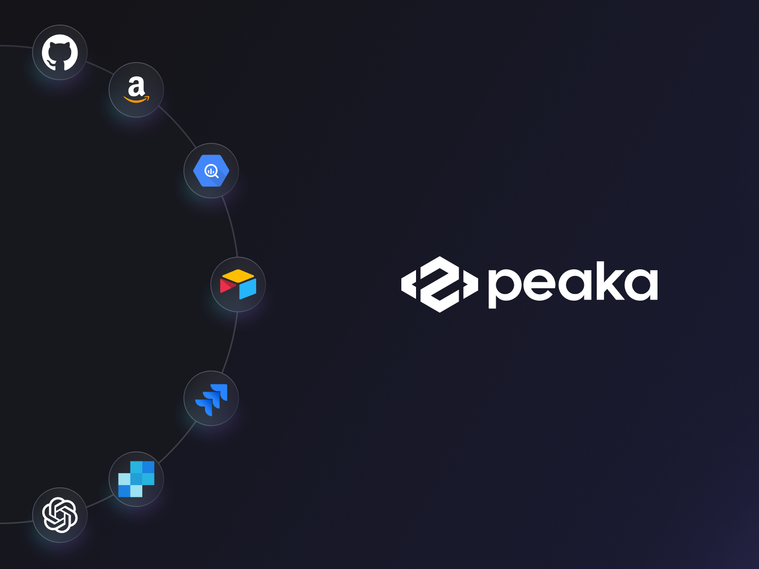Why You Must Focus on Your Connector Infrastructure in 2024
AI-based solutions brought to light a problem that already needed answers but was pushed to later dates by businesses due to its complexity: Having a connector infrastructure that is compatible with your customers' tech stack.
Many organizations, regardless of their size, often build connections to major software: Big CRMs, payment platforms, or relational databases that support only a small share of their clients’ integration needs. However, with many tools disturbing big players for market share, every company’s tech stack started to look different than others. Even with NoSQL databases alone, there are at least 7 options business leaders can consider. When you scale this to more software categories like Application Tracking Systems (ATS), Marketing Automation, and AI tools, you end up with thousands of different variations for businesses to build their tech stack around.
So what happens to the remaining tools? Customers usually integrate what's available at first and give your product a go, but eventually churn as your tool cannot provide a full solution to them. With many competitors around, they’ll soon start looking for other solutions. This churn can usually be explained by two major reasons: Vendor lock-in and the inability to cross-source your products' analytics.
Connectors: The hidden key
The idea of being dependent on a single tool can be concerning for customers because it limits their ability to switch to competing products, potentially leading to higher costs if the vendor (you) decides to increase prices or reduce the quality of service. Furthermore, being tied to a single vendor restricts customers’ flexibility in adapting to new technologies. By offering extensive APIs and integration options with other platforms, SaaS tools can fit into a customer's existing ecosystem. Being vendor-neutral also means you constantly have to deliver the best product in the market, but that should be your goal anyway.
Though many founders are aware of the importance of these integrations and the potential capital lost due to not offering them, they frequently misjudge the optimal timing. Many believe that it’s best to first find product-market fit (PMF) and then scale their integrations, which is very reasonable. Unfortunately, after achieving PMF and experiencing rapid scaling, numerous other developments pile up, leaving little time to build these connectors.
“We’re building integrations as demanded.” I’ve been hearing this phrase quite a lot from all sizes of companies. However, this approach is doomed to fail. Even if you start building integrations the second you meet the prospect, by the time they churn, you’ll have built one or two new integrations at most. Having a strong connector stack in place before reaching customers improves new business close rates while reducing customer churn. Top Highlight Given these considerations, the question isn't about whether to build integrations but about the pace and quantity of these integrations.
Should you build your connector empire or buy it off-the-shelf?
Despite all the benefits listed above, there are several reasons why building integrations does not appeal to companies:
-
Performance & Scalability
-
Customer Churn Possibility
-
Integration Maintenance
-
API Documentation
Each point raises bigger concerns than the last. Considering that the majority of organizations rely on small in-house engineering teams with competing priorities in their backlogs, many companies struggle to initiate this project. Tasking the engineering team would take up most of (if not all of) their time, forcing them to forgo product-related tasks. Cases where there is limited effort to get started usually fail as the integrations are not being built at the pace needed.
While it may appear simple, many companies spend months integrating just one additional connector into their product. The common issue is that building these integrations in-house is technically complicated and time-consuming. Furthermore, there's always a risk of these integrations failing to meet client expectations regarding data synchronization.
In a hypothetical scenario, a company building out its integrations before engaging with customers loses a lot of time and potential capital in the process. However, the real technical challenges surface during the development phase, as managing and maintaining these integrations proves even more painful than building them.
To give you an idea of the complexity, think of a relatively simple software system. This system often consists of multiple components, services, and technologies, where each element may have its own updates, dependencies, and configurations. Within these dependencies, there are external libraries, frameworks, and services. To complicate matters further, ensuring data consistency, security, and integrity across shared libraries requires careful execution. The list goes on, but you get the idea. Failing in any of these aspects will lead to non-functional infrastructure.
Addressing these challenges often requires a combination of skilled personnel, effective project management, and the use of tools and methodologies designed to manage complexity, such as DevOps practices, continuous integration/continuous deployment (CI/CD) pipelines, and automated testing.
In today's fast-paced tech landscape, where a new SaaS solution emerges almost daily, businesses are constantly exploring new technologies, which necessitates daily construction of new connections by engineers. Once a commitment is made to develop all connections in-house, it invariably requires dedicating an engineer solely to crafting new connections.
Unfortunately, the challenges don't stop there. Integrations that have been previously built often malfunction due to changes in third-party APIs. When this occurs, the engineering team must delve into the documentation to re-establish these connections. And, as you might guess, some of these documents are exceptionally difficult to decipher, almost as if they were deliberately written in an obtuse manner.
Peaka’s “white label” model
Recently, Peaka introduced a Partner API, enabling customers to leverage Peaka’s offerings under their own branding for their connector infrastructure. For those who aren’t familiar with the product, Peaka is a serverless connector infrastructure that offers connectivity to 300+ relational and NoSQL databases, APIs, and SaaS tools in minutes (check out this MongoDB example to see how it works). By using Peaka, companies can not only construct their data stack in mere minutes but also seamlessly integrate with their customers' tech stacks.
Peaka's partners have the flexibility to use the Partner API, JDBC driver, ODBC driver, or Python connectors for instant connection to the solutions their customers need. Furthermore, if necessary, partners can utilize Peaka’s zero-ETL solution to access every aspect of the data pipeline. Peaka's usage-based pricing model, coupled with 24/7 engineering support, provides partners with an efficient and scalable pricing strategy, allowing them to pay as they grow.
Recently, a Peaka customer shared a success story with us that underscores the importance of connector infrastructure. During a demonstration to a B2B SaaS unicorn, the prospect's Product Manager (PM) explained how they wanted to interact with our customers’ AI agent. The process required multiple systems to be interconnected, which is a fancy way of saying our customer needed built-in connectors.
Fortunately, we had onboarded this customer just two weeks before the meeting, enabling them to showcase a brief demonstration of how the agent would function on the spot. After closing that deal in about two weeks, the prospect's PM revealed that they typically spend around six months to finalize their third-party software purchases. However, the on-spot demonstration piqued their interest and significantly expedited their decision-making process in that meeting.
The bottom line
Once a business leader grasps how an accessible connector infrastructure can broaden their market reach, their go-to market strategy dramatically shifts, often leading to faster deal closure.
For those who’re interested in exploring how Peaka can differentiate their product, we’d love to discuss potential use cases and synergies and encourage everyone to discover Peaka!




 Please
fill out this field
Please
fill out this field









